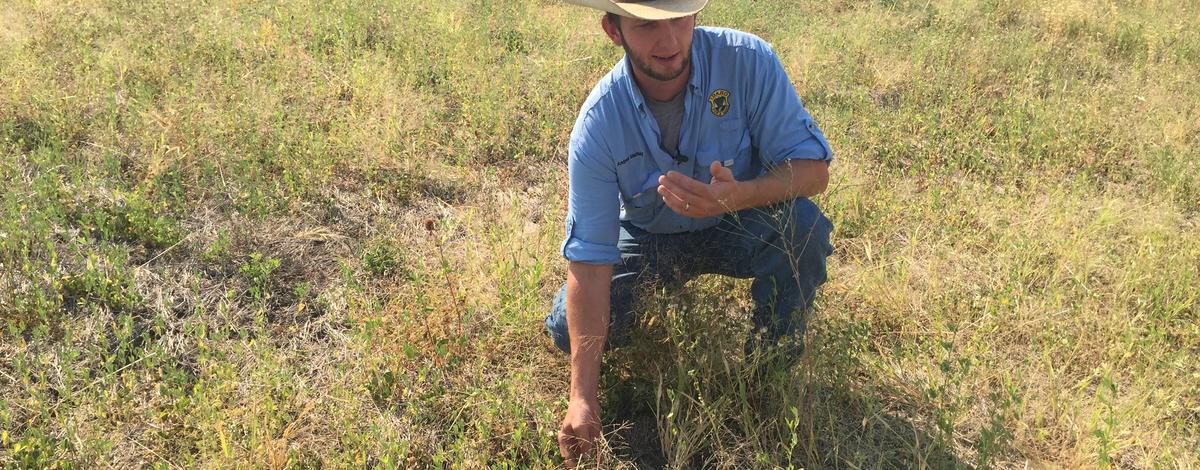It doesn’t take long for a landowner’s field to become a haven for wildlife. Jim and Emily Fredenburg live on the edge of the Palouse country near Troy. In spring 2014, they planted over 100 acres in a diverse seed mix of grasses and forbs including basin wild rye, timothy, tall wheat grass, yarrow, orchard grass and red and white clover. By the summer of 2015 it looked like this. 
The project is called State Acres for Wildlife Enhancement or “SAFE” program, and it helps landowners produce and attract more wildlife to their properties.
Andrew Mackey, the habitat biologist for Fish & Game’s Clearwater Region provided technical assistance along with the U.S. Department of Agriculture’s Farm Service Agency and the Natural Resource Conservation Service.
“So if you are a producer, and under certain land eligibility, we can leverage state and federal dollars to do these types of projects,” said Mackey. “So in this case here, this is essentially a federal project. This is federal money being paid for this landowner to do these habitat projects.”
This habitat will provide cover for upland game, both for over-wintering and also for protecting birds and their young from aerial predators. The diverse plants attract insects which provide food for the birds. Moreover, it also is excellent forage for deer and elk.
But the field not only attracts wildlife, it has other advantages for the farmer or rancher, such as keeping soil from eroding off the land, improving water quality and attracting pollinators that benefit adjacent landowners.
Jim Fredenburg said that for the first time in years, he did not have erosion problems with this field. “The ditches didn’t wash back in. We had some very, very hard thunderstorms this spring and didn’t have any problem with erosion at all,” said Fredenburg. “And we were real pleased with that.”
And so was Mackey. “I’m passionate about it because if we can improve habitat, that means we’re going to improve the number of animals that can sustain on that piece of property,” said Mackey. “And not only that, we don’t only meet just the wildlife requirement here, we meet the soil health issues, we meet erosion, we meet water quality. Everything that we do with habitat influences things down the road.”
For more information about Wildlife Habitat Improvement in Idaho, ask for your habitat biologist at your regional office.

